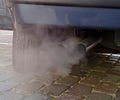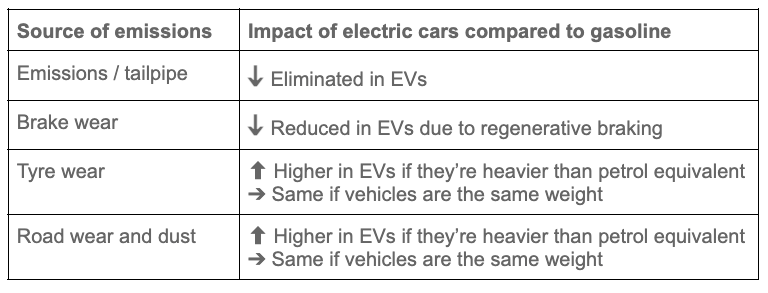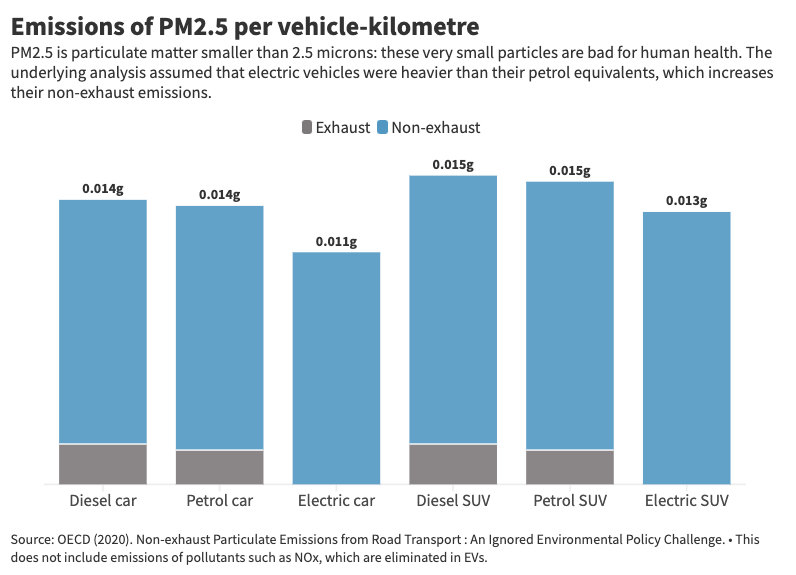Share this post

Do electric vehicles reduce air pollution?
www.sustainabilitybynumbers.com
One of the touted benefits of electric vehicles is that they reduce local air pollution. They’re not just better for the climate, they clean up our air too.
But there have been question marks around this assumption. There might be no tailpipe emissions from an electric vehicle (EV) but if they’re heavier – which the average one currently is – there could be more pollution from brake, tyre, and road wear. Would this be enough to undo the benefits of having no exhaust emissions?
In this post, I’ll give an overview of what the research says (and doesn’t yet know).
Here’s a brief summary of the take-homes:
-
Overall, electric cars do reduce levels of air pollution compared to petrol, and especially diesel cars.
-
The size of this reduction depends on their weight, the age and type of car they’re replacing, and the electricity mix.
-
Electric cars do not completely fix the problem. Non-exhaust emissions are still significant.
-
Electric cars eliminate exhaust emissions of NOx and PM2.5, and reduce particulates from brake wear due to regenerative braking.
-
If they are heavier, they could increase tyre wear and road dust pollution.
-
Non-exhaust emissions need much more research, especially on solutions such as improved tyres, particulate filters, the role of more automated driving, and vehicle weight.
-
The best way to reduce local air pollution is to have fewer vehicles on the road.
We need to consider exhaust and non-exhaust emissions
When it comes to air pollution we need to consider a range of pollutants. There are particular gases, such as nitrogen oxides (NOx) which are particularly bad for human health. But there are also particulates – especially very small particles (which we call ‘PM2.5’) that can get lodged into our respiratory systems.
We also need to consider four sources of pollution:
-
Exhaust / tailpipe
-
Brake wear
-
Tyre wear
-
Road wear and dust
The final three are collectively called ‘non-exhaust’ emissions. I’m going to go discuss each individually, but in the table, I’ve provided a quick summary of how EVs compare to gasoline cars.









0 General Document comments
0 Sentence and Paragraph comments
0 Image and Video comments
General Document Comments 0

